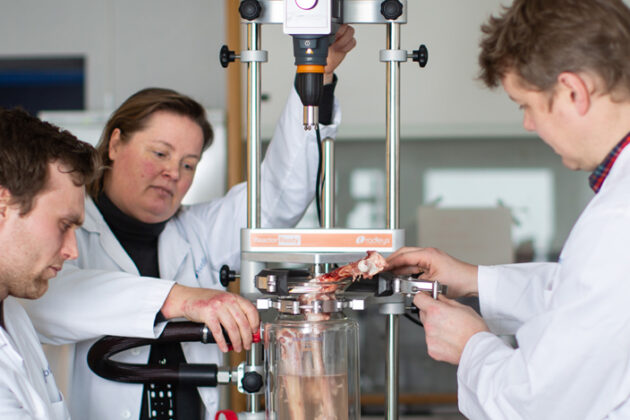Promising results indicate that lactic acid can remove unpleasant flavours

Challenges regarding unpleasant odours and flavours associated with fish and whey protein powders may be in the process of being solved. Fermentation with lactic acid bacteria provides promising results.
This means that the profitability in use of residual raw material may increase considerably.
Spines, heads and other residual raw material from cod, chicken and cheese production have gone from being waste or animal feed, to forming the basis for new products in their own right.
Using advanced chemical processes called protein hydrolysis, enzymes are added to “cut” proteins into pieces. When the protein is broken down in this way, peptides– a chain of amino acids – are formed. This process helps separate the start raw material components such as fat, proteins and bones from each other. This results in valuable products such as marine oils and protein powders.
“But to be honest, it doesn’t always smell and taste that good”, says Nofima researcher Diana Lindberg.
Fermentation with lactic acid bacteria
Researchers have been working hard for a long time to try to remove the bitter flavour, so that the nutritious protein powder can become more usable and attractive for human consumption. One theory is that the bitter flavour is particularly associated with the smallest peptides that are formed during the hydrolysis process.
The idea of using lactic acid bacteria arose during a lunch discussion across disciplines between researchers Diana Lindberg and Lars Axelsson. Diana works extensively with the utilization of residual raw materials in several different projects, and the challenges associated to flavour are common to many of them. Researcher Lars Axelsson is an expert in the field of bacterial fermentation. During discussions on how to cultivate lactic acid bacteria, they found studies that show that some lactic acid bacteria are very good at using peptides to grow, alongside the preferred nutrient sugar. The two Nofima researchers agreed that it would be interesting to try to determine if there could be a “perfect” lactic acid bacterium that used peptides in its growth to the same extent as those known to be bitter during cultivation.
Creating a change in flavour
Researchers now needed someone to perform extensive trials in connection with the hypothesis that fermentation could be the solution regarding the challenge of bitter flavours in residual raw material products.
The study’s starting point are hydrolysates, powders in which the proteins are separated from the rest of the residual raw material through the protein hydrolysis process. In order to gain more knowledge about how the flavour changes, hydrolysate was used that was produced from both fish and whey, known to create great challenges regarding flavour, and chicken – which has been proven to give fewer flavour challenges in previous studies. In summary, lactic acid bacteria is added to the protein hydrolysate which initiates a fermentation process. The lactic acid bacteria are able to grow on the peptides from the hydrolysis which create a change in flavour.

42 different types of bacteria
Diana and Lars found a master student who was very interested in the project.
“Nofima has organized things very well for me. This was just the type of task I had been dreaming of”, says Magnus Rein, Master’s student from NMBU.
“Magnus has done a great job, we have been really lucky in getting such a skilful student like him”, says Diana.
The student was assigned a large task. 42 strains of lactic acid bacteria were used in a big screening which gave growth data on several types of hydrolysates. The results show that there was a big difference in the growth rates of the different lactic acid bacteria and interestingly, bacteria were found that grew well without added sugar.
“This is particularly interesting because it enables a process where lactic acid bacteria can be added to a hydrolysate product without having to add sugar. In the final stage of the project, the flavour of fermented hydrolysates based on whey, chicken and cod was examined and compared to the hydrolysates before fermentation. The results are very promising, especially for some of the hydrolysates with the most challenging flavours”, says Diana Lindberg.
Good results – and ten new questions
Good results often lead to more questions than those answered during the study.
“Until now, we have only scratched the surface of something that may prove to have a great influence regarding the value creation of residual raw material products. We have had some good results but at the same time gained ten new questions. Why do some bacteria work better than others? Probiotics, found in lactic acid bacteria, have properties that improve and reinforce the human immune system. Does fermentation give protein powder a probiotic effect? What if we try totally different methods of hydrolysis, or ferment over shorter periods of time? It’s extremely frustrating not being able to get started straight away”, laughs Diana Lindberg.
She is really itching to start trials on the promising results in a full-scale research project. But funding is needed. So, while they are waiting for funding, a scientific publication is now being written about the extremely interesting findings.
“It is possible that others have achieved similar results with the fermentation of residual raw material, but as far as we know, no articles have yet been published about this. We feel we found some really exciting results, with good reasons to continue in follow-up projects”, says Diana Lindberg.